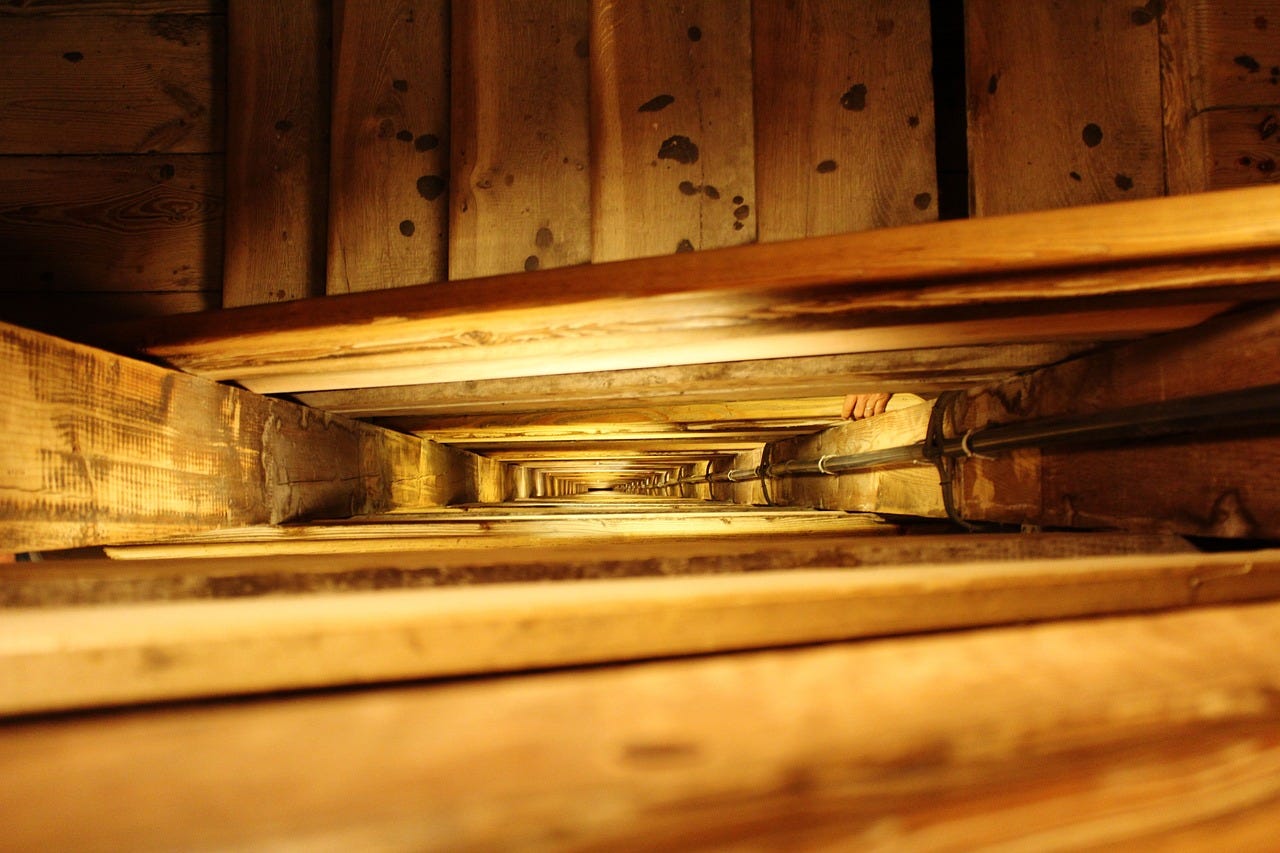Creative restoration: repairing the ‘soul beam’
After a prolonged break (which was longer than anticipated—but then, isn’t life like that sometimes?), it feels good to re-emerge. I’ve missed being here. In my absence, there’s been a flurry of new subscribers. Welcome! I’m so happy to have you join us.
For me, the last couple of months have been characterised by a lurch into accelerated change. There’s the tumultuous state of the wider world, of course: raging temperatures and wildfires; seismic shifts in political power across the globe. On a personal level, time has been swallowed up by illness, and then by a slow recovery.
But I’m grateful that, before the illness, I managed to take a break—a tiny contemplative pocket —in a beautiful rural corner of the UK. It was a summer-Solstice-holiday of sorts, actually more like a retreat: time immersed in woods and birdsong; time infused with relaxation and sleep and spacious permission to slow down. A time of restoration.
What does it mean: restoration?
Here, I pull together fragments of experiences from my retreat, exploring what restoration—in all its facets—means for creativity and the creative project of living a life.
i. Repairing the ‘soul beam’
Our retreat space and home for the week is a treehouse studio in magical woodland.
It’s part of ten-acre former farm, presided over by a sixteenth-century, timber-framed house with a listed preservation order. The old farmhouse is the home of our hosts, Marcus and Jane. When we arrive, they’re in the throes of a complex restoration process—replacing the rotting beams that threaten to weaken the house’s structure, and a key cause of insidious damp.
When we pull up, there’s a fret of light rain in the air and the rhythmic sound of a hand saw. Jane bounds down the drive to welcome us. As we stand in the drizzle, she explains about the building work.
‘It shouldn’t disturb you,’ she says. ‘You won’t hear any power tools. They’re going old-school and doing it all by hand. Turns out there’s a local guy who specialises in restoring wood-frame houses. They call him the house-whisperer.’
‘That’s so cool!’ I say.
Jane laughs. ‘Isn’t it? He’s advising us how to get the house back to its original state.’ She points to the farmhouse, its timber bones protected by the tent of an enormous tarpaulin. ‘See the brickwork at the bottom? We had it sandblasted to get rid of the concrete cladding. Now the house can start to breathe again.’
I take in the layers of bricks that, against the white of the cladding, fringe the house like a dark petticoat.
Jane says: ‘What really got me, though, was when the house-whisperer found the soul beam.’
‘Soul beam?’
‘The beam that runs through the middle. It supports the infrastructure. Apparently, it has to be preserved at all costs.’

Later, fascinated by this concept, I Google ‘soul beam.’ Nothing comes up. After more digging, I realise why. It is ‘sole’—not ‘soul’—beam. They’re pronounced the same way, of course, and so I’d misinterpreted what Jane said.
In a timber construction, this central plank—the sole beam—is an integral part of the ‘sole plate’, which has two main functions. It provides a framework for the shape and structure of the house. And it bears the weight of the house, allowing that weight to be transferred to, and spread evenly across, the foundations.
It prompted me to wonder whether we all possess a sole (soul) beam: a blueprint or foundation for what makes us who we are; strong and sturdy, excavated from nature; aligned and elegant and symmetrical.
But, over time, we become weathered. Decay creeps in and our material shell deteriorates. We become prey to the external, meteorological conditions that threaten the robustness of our inner workings. The timbers are insufficient to support us. Our psyches bloom with mould; and with that we lose a sense of our own value and worth. We become more in touch with our shadow than with our light.
When that happens, who will strip back the layers that obscure the soul so it can breathe again?
We can call on a house-whisperer to help us: someone to witness our chaos and decomposition and, more importantly, to bring their wisdom to help us mend.
But we all have within us our inner house-whisperer: the part of ourselves that identify what needs repairing; that brings knowledge and care and love to the restoration process, slowly stripping back the layers that get in the way of us expressing the essence of who we are.
How will you put your house-whisperer to work today?
If you appreciated the content of this post, you might also enjoy this one from earlier in the year.
This being creative is a guest house
As a young man in his twenties, writer Will Buckingham found himself in the middle of a tea shop in a bazaar in Pakistan, being entertained by a stranger. Recounting this meeting in his book Hello Stranger, Buckingham’s retrospective account is full of regret; he describes his youthful lack of understanding of the codes of cross-cultural hosting. I imag…




